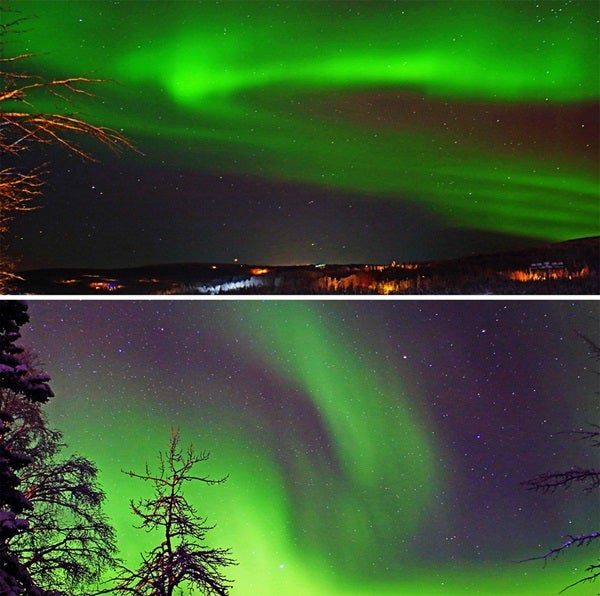Into the void
When watching the northern or southern lights, it’s hard to shift your gaze away from the very thing that makes your heart sing. The beautiful curtains, lance-like rays, and other bright features, however, make up only a part of this natural electric light orchestra. Active displays also have an alluring, dark, and often overlooked dimension called the black aurora. To see it, all you have to do is switch your attention from the singing light to the dancing dark.
Both the bright and dark auroral activity were extraordinary early Christmas morning 2013 as viewed from Fairbanks, Alaska. That night, multiple curtains materialized, each separated by a lane of darkness. As the intensity of the aurora increased, so too did the dark swirls and patches among the bright glow. At times, the dark structure was so cursive that it seemed like spectral handwriting. Visually, I couldn’t separate the light from the dark; they belonged together like the keys on a piano. The aurora is not, then, so much the northern or southern lights as it is the ebony and ivory of high-latitude celestial phenomena.
Auroral gaps
The bright lights we normally associate with aurorae occur when charged particles spiral down Earth’s magnetic field lines, ionizing the atmospheric atoms and molecules and causing them to glow. As the European Space Agency’s four Cluster spacecraft revealed in 2001, however, black aurorae complement the light show by making holes in the ionosphere — the region of the upper atmosphere where the northern/southern lights appear. Counter to the bright aurorae, the dark structures form as negatively charged particles are sucked “up and out” of the atmosphere along magnetic field lines that adjoin the bright aurorae. This negative action completes a circuit between the ionosphere and the magnetic field, creating dark vertical shapes that can stretch tens of thousands of miles and remain visible for several minutes.
The 2013 Christmas aurora displayed a varied array of fanciful dark features — including meandering black rivers, billowing curtains, bays, and rifts. Among the most dramatic, however, were the little black stripes that whipped across the dense base of the auroral arcs and curtains, causing the band to “ripple” in real time like the strings of a plucked harp. At other times, several discrete green bands appeared close to the northern horizon, each delineated by a dark band, making the scene resemble a celestial moiré pattern.
Auroral forms are light, dark, and whimsical. They play with our eyes and our imaginations, and that’s what makes them fun. If you have the desire to study the “anti-aurorae,” however, remember to relax your eyes, defocus the light, and enjoy the darkness — if even for only a minute or two. Be sure to send what you see and don’t see to sjomeara31@gmail.com.











